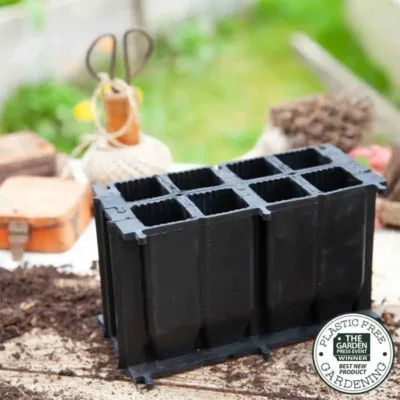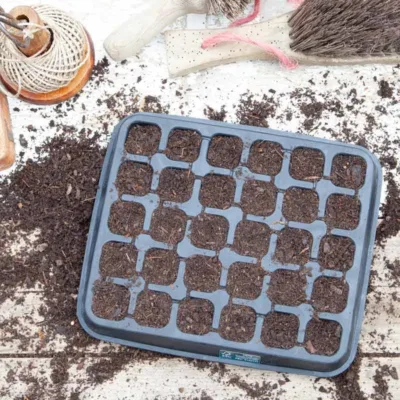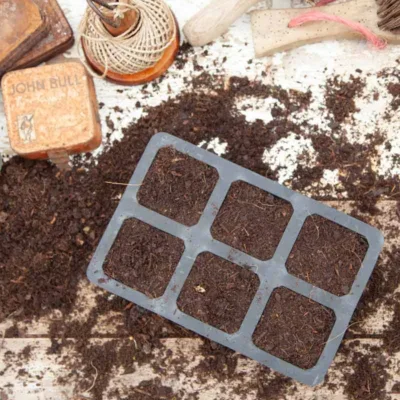Introduction to Rubber Seed Cell Trays
Rubber seed cell trays have emerged as a versatile and efficient tool in gardening and agricultural practices, primarily designed to assist in the sowing and nurturing of seeds and seedlings. These trays, typically constructed from durable and flexible rubber materials, are uniquely designed with individual cells to accommodate a variety of seed types. The design ensures that each seed has an optimal amount of space and nutrients, enhancing the overall growth potential of the seedlings.
The material composition of these seed cell trays often includes high-quality, weather-resistant rubber. This choice of material is pivotal as it provides several key benefits: resilience against extreme weather conditions, durability for repeated use, and flexibility, which allows for easy handling and movement of the trays. Rubber’s inherent properties also contribute to providing a stable and favorable environment for seed germination, aiding in moisture retention and drainage, essential for healthy seedling development.
The usage of rubber seed cell trays dates back to the mid-20th century, with initial applications observed in small-scale gardening and experimental agricultural setups. Over the decades, their usage has witnessed an upward trend, spurred by advancements in material science and a growing interest in efficient, sustainable gardening practices. Today, they are extensively utilized not only by professional horticulturists and large-scale agricultural operations but also by home gardeners who seek to improve their plant propagation techniques.
The adoption of rubber seed cell trays integrates seamlessly into modern gardening practices due to their ease of use, cost-effectiveness, and the positive impact on seedling health and yield. This adaptability underscores their significance in advancing agricultural methodologies and promoting sustainable practices. Whether for a backyard garden or an expansive farm, rubber seed cell trays provide a reliable solution for optimizing the early stages of plant growth, setting the foundation for healthier and more productive plants.
Enhanced Seed Germination and Plant Health
Rubber seed cell trays offer a superior growing environment, optimized to facilitate enhanced seed germination and promote plant health. The design integrates advanced features that directly impact the successful growth of seedlings. A key aspect of this environment is the trays’ exceptional water retention capabilities. Made from high-quality rubber, these trays maintain adequate moisture levels, ensuring the seeds have consistent access to the water necessary for germination without the risk of over-watering.
Proper aeration and drainage are critical components in the trays’ design, significantly contributing to balanced soil conditions. The structure of rubber seed cell trays includes strategically placed drainage holes that prevent waterlogging, thereby reducing the potential for root rot—a common dilemma in seed starting. By facilitating effective drainage, these trays also create a well-aerated growing medium, vital for the respiration of plant roots.
Furthermore, the rubber material of the trays inherently reduces the likelihood of fungal infections. Fungal spores often thrive in overly moist and poorly ventilated environments, but the combination of optimal water retention and effective drainage in rubber seed cell trays creates an inhospitable environment for these pathogens. As a result, seedlings grown in these trays are less susceptible to diseases, resulting in stronger, more resilient plants.
Another critical advantage of using rubber seed cell trays is their enhanced durability, which provides a stable container for seedlings throughout the critical early stages of growth. This stability is essential for minimizing transplant shock when seedlings are moved to larger growing spaces. The robust nature of the trays ensures that root systems are well-protected, allowing young plants to develop healthy and extensive root networks.
Overall, the integration of water retention, proper aeration, and effective drainage in rubber seed cell trays creates an optimal environment for seed germination. These features collectively contribute to the growth of healthier seedlings, ultimately leading to more robust plants capable of thriving in various gardening conditions. By preventing common issues such as root rot and fungal infections, rubber seed cell trays provide a reliable and efficient solution for gardeners aiming to cultivate strong and healthy plants from the outset.
Durability and Reusability
Rubber seed cell trays offer a significant advantage in terms of durability and reusability, making them a superior choice for both amateur and professional gardeners. Unlike traditional plastic or biodegradable seed trays, rubber trays are designed to withstand substantial wear and tear. The inherent flexibility of rubber material ensures that these trays are resistant to cracking or breaking, which is a common issue with plastic trays that become brittle over time.
Moreover, rubber seed cell trays exhibit excellent resistance to chemical and UV damage. Many garden chemicals and fertilizers can cause plastic trays to degrade quickly, while prolonged exposure to sunlight can lead to warping or disintegration. Rubber, however, maintains its integrity under such conditions, ensuring that the trays remain usable for many seasons. This UV and chemical resistance contributes significantly to the long-term sustainability of rubber trays, reducing the need for frequent replacements and thereby minimizing environmental waste.
To further enhance the lifespan of rubber seed cell trays, proper cleaning and maintenance are essential. After each use, it is recommended to rinse the trays with water to remove soil and debris. For a more thorough cleaning, a mild soap solution can be used. It is also advisable to periodically disinfect the trays with a diluted bleach solution to prevent any contamination from previous plantings. Ensuring that the trays are completely dry before storing them in a cool, dry place will help prevent the growth of mold and mildew.
The combination of durability, resistance to environmental factors, and ease of maintenance makes rubber seed cell trays an outstanding investment for gardeners. Their long-lasting nature not only provides economic benefits but also supports sustainable gardening practices, aligning with eco-friendly initiatives. These trays prove to be a robust alternative, offering a dependable and reusable solution for successful seed sowing and seedling growth.
Economic and Environmental Benefits
Rubber seed cell trays are gaining attention for their profound economic and environmental advantages in the field of gardening. One of the primary economic benefits is their reusability. Unlike traditional plastic trays, which often degrade and require frequent replacement, rubber trays are remarkably durable. This longevity translates into significant cost savings over time, as gardeners and agricultural professionals can use the same trays for multiple planting cycles without the need for constant repurchases. The initial investment in rubber seed cell trays quickly pays off, making them a cost-effective choice for anyone looking to optimize their gardening budget.
From an environmental perspective, the advantages of rubber seed cell trays are even more compelling. Traditional plastic trays contribute to the growing problem of plastic waste, which poses severe threats to wildlife and ecosystems. In contrast, rubber trays, made from natural and recycled rubber materials, help mitigate this issue. Rubber is a sustainable material option because it is biodegradable and can be sourced from renewable resources. By choosing rubber over plastic, gardeners can significantly reduce their environmental footprint, contributing to the global effort to combat plastic pollution.
Furthermore, the use of rubber seed cell trays aligns with environmentally-friendly gardening practices. These trays support reduced waste generation, as their durability means fewer trays end up in landfills. This aspect not only addresses waste management issues but also promotes a more sustainable approach to gardening. Additionally, rubber’s insulation properties help maintain soil temperature and moisture levels more effectively than plastic, which can enhance plant growth and reduce the need for excessive watering, thereby conserving water resources.
In conclusion, rubber seed cell trays offer a multitude of economic and environmental benefits that make them a superior choice over traditional plastic options. Their reusability and durability lead to cost savings, while their sustainable material composition aids in reducing plastic waste and promoting eco-friendly practices. By adopting rubber seed cell trays, gardeners can enjoy both more sustainable gardening and a reduced carbon footprint.



